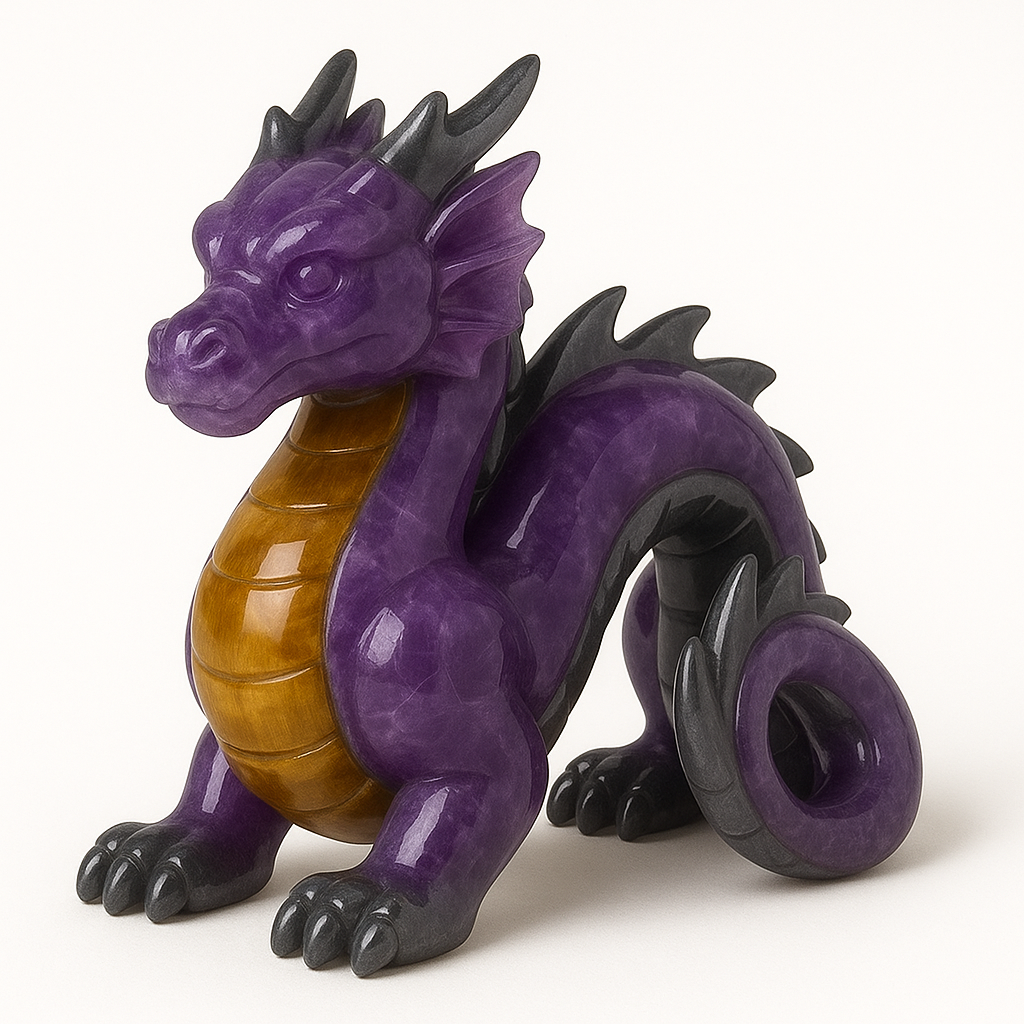
The Symbolism of Dragons
Share
Across the span of this planetary memory complex, few symbols blaze as brightly in myth and imagination as the dragon. Though not a creature of second-density incarnation upon this plane, the dragon nonetheless occupies a vast and potent space within the collective archetypal mind. It is a being conjured across continents and cultures, depicted as guardian, destroyer, seer, and sovereign—an amalgam of elemental force and spiritual power. As such, the dragon is not simply an animal symbol, but an energetic construct, a reflection of inner dynamics magnified into form.
To contemplate the dragon is to approach a mirror of transformational fire, hidden wisdom, and the challenge of integrating great power with inner mastery.
The Echoes of Flame and Wing
Dragons have taken form in nearly every mythic tradition: soaring through the skies of East Asian cosmology, hoarding treasure in European legends, slumbering beneath mountains, or coiling through celestial realms. Though their shapes vary—serpent-like in the East, beast-like in the West—the core archetype remains unchanged: the dragon as keeper of power, of secrets, of thresholds.
In Eastern traditions, particularly in China, dragons are benevolent and wise—masters of rain, storm, and spiritual ascent. They are guardians of heaven’s will, bringers of prosperity, and embodiments of flowing energy. Here, the dragon is revered not for its might, but for its balance with nature and its divine origin.
In the Western mind, the dragon often emerges as a challenge—a beast to be confronted. It guards treasures, hoards gold, or sleeps atop sacred ground. It becomes the externalization of the shadow: the untamed inner fire that must be acknowledged, faced, and transformed. Here, slaying the dragon is not destruction, but integration—the claiming of one’s inner gold.
Whether revered or feared, the dragon always stands at the threshold between what is known and what lies beyond.
Majesty, Terror, and the Inner Flame
The behavior of the dragon, while mythic, is consistently portrayed as deliberate, powerful, and wise. It does not lash out aimlessly. Its fire is precise. It sleeps with one eye open. It waits, often guarding, always watching.
This restraint in the face of enormous power reflects the archetype of spiritual sovereignty—power that is contained, not wasted; wisdom that is veiled, not absent.
The dragon’s wings, often symbolic of ascension, mirror the potential of spiritual flight, while its coiled body speaks of kundalini, the dormant energy at the base of the spine that, when awakened, spirals upward through the energy centers toward unity with the infinite. In this sense, the dragon becomes a guardian of initiation, standing before the gates of higher knowing.
To approach the dragon is to confront the full intensity of the self—light and dark, will and fear, fire and stillness.
Resonance with the Energy Centers
The symbolic dragon cannot be assigned to a single energy center, for its very purpose is to span and test the entire system of the mind/body/spirit complex. Yet within its layered symbolism, certain centers shine more clearly.
- Primary alignment: Indigo-ray energy center – The third eye, seat of spiritual vision, wisdom, and initiation. The dragon appears most often at the boundary between densities of illusion and densities of truth. It guards sacred knowledge, tests the seeker, and represents the trials of the self confronted at the gateway to deeper understanding. Indigo-ray energy is focused, inner-directed, and charged with responsibility. The dragon embodies this energy—sovereign, watchful, unyielding.
-
Secondary resonance: Red-ray and Yellow-ray centers – The root chakra (red-ray) is awakened in the dragon’s primal force—its fire, its grounding, its elemental presence. The dragon is power, unfiltered and ancient.
The yellow-ray center, governing power structures, identity, and social dominance, is often depicted through the dragon’s relationship to territory and treasure. In this, the dragon may be seen as a distorted or mastered expression of yellow-ray—either as egoic possession or rightful kingship.
Thus, the dragon spans a wide energetic arc, but its true dwelling place is in indigo, with a tail that coils through the base.
The Gatekeeper of Transformation
The dragon is not an enemy, though it may appear as one. It is a gatekeeper. Whether as the guardian of treasure or as the final trial before spiritual rebirth, it demands the seeker bring all aspects of self into harmony.
Those who flee the dragon remain bound by fear. Those who confront it not with violence, but with inner alignment, pass through transformed. The dragon is a force that does not yield to falsehood. It will not bow to pretense. It requires truth—of will, of heart, of vision.
To dream of dragons, to write of dragons, to walk with the symbol of the dragon is to call upon the fire of transmutation and the vision of the unseen. It is to summon the spiral within—the energy that rises only when the self is ready to burn away the illusion and meet the infinite within.
The dragon is not slayed.
The dragon is understood.